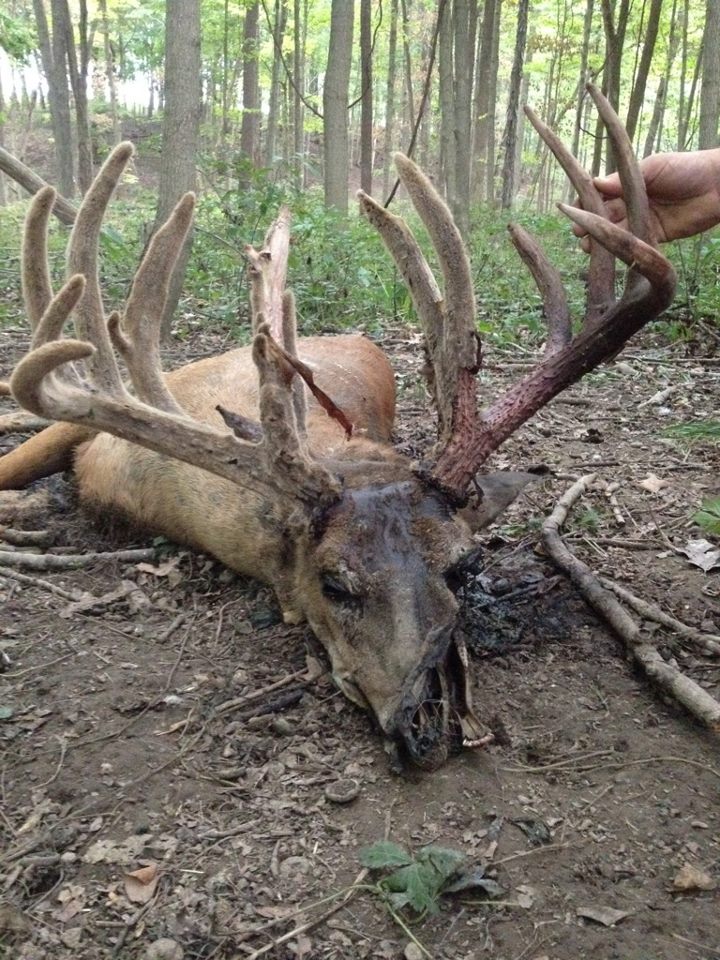Epizootic Hemorrhagic Disease (EHD) is one of the most deadly deer diseases, striking in the late summer to early fall and you never know where the disease will rear its ugly (not to mention deadly) head.
Reports of EHD outbreaks are already starting to show up in whitetail country this year. As summer fades into fall it’s time once again to undertake the unpleasant but necessary task of taking stock of the impact of EHD on our (and maybe even your) deer herd.
Commonly, but incorrectly, called “blue tongue”, EHD is caused by the bites of infected midges, which are commonly found near water on exposed mudflats caused by hot and dry conditions. They breed in these muddy wet areas near swamps, bogs, and flooded areas. Disease transmission ceases immediately upon a midge-killing frost or freeze.
Symptoms include loss of appetite, fear of humans, weakness, rapid respiration, panting, and fever. Death generally occurs 8-36 hours after the onset of symptoms. EHD-infected whitetails are often found near watering areas as they crave water with the onset of the disease because of the high fever. Older age bucks seem to be particularly vulnerable to the deadly disease. Dead deer found in or near water sources during late summer and early fall usually indicates an EHD outbreak. Report any and all dead deer found at these sites to state conservation officials.
Deer populations generally bounce back from EHD outbreaks in 2-3 years but with the
proliferation of fawn predation, you cannot always count on a solid crop of fawns to replenish the herds. So slip on your boots, head out to your hunting property, and inspect it for a serious outbreak of EHD.









![The Best Deer Camp Chili [VIDEO] Deer Chili Ingredients, Tomatoes, Chili Spices](/wp-content/uploads/2015/10/Deer-Chili-Deer-Camp-Recipe-218x150.jpg)








![How to Call Elk Early in the Season [VIDEO]](/wp-content/uploads/2016/08/byers003-218x150.jpg)




![Idiots Disturb Hunter: How Would You Have Handled It? [VIDEO]](/wp-content/uploads/2015/10/DSC00110-e1474487693878-100x70.jpg)
![Albino Buck Shocked to Shed His Antlers [VIDEO]](/wp-content/uploads/2015/10/AlbinoDeer-100x70.jpg)